Latest Review
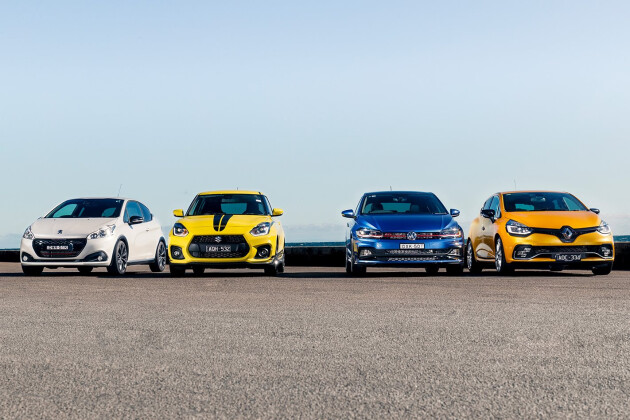
Volkswagen Polo GTI vs Renault Clio RS vs Suzuki Swift Sport vs Peugeot 208 GTi comparison review
Who says you have to spend big to have fun? We grab four $30K hatches that prove driver’s-car bargains do exist
ENGLAND’S immortal Mini Minor may have started the pocket-rocket phenomenon some six decades ago, but it’s France, Germany and Italy that have nurtured the class in the intervening years, with a bevy of belting superminis brandishing evocative badges like GTI, RS, ST, Ti and Turbo.
And let’s not forget Japan’s Suzuki either, the unlikely survivor on the Australian hot-hatch scene, supplying an almost uninterrupted series of sizzling Swift GTis (and latterly the Sport) since the spring of ’86.
Volkswagen re-entered the light hot-hatch fray with the Polo GTI in 2005 (the Golf GTI having outgrown it) but it wasn’t until the succeeding generation five years later, ushering in back doors and a dual-clutch auto, that things became serious, broadened the genre’s reach significantly. With sales soaring and a Wheels COTY gong under its belt, the Wolfsburg wunderkind has become the one to beat.
Now there’s another all-new Polo (the Mk6) to take on the equally fresh sixth-gen Swift Sport – two exciting reasons for a four-way hot-hatch fight.
Inevitably, the GTI takes a huge step forward by adopting VW’s ubiquitous MQB modular transverse architecture … yet also looks back at the same time, because out goes the old 1.8-litre turbo for a 147kW/ 320Nm 2.0-litre turbo, in a mighty no-substitute-for-cubic-inches middle-finger gesture to the downsizing trend. There’s also extra body bracing, a stronger power-steering motor and revised suspension with a thicker anti-roll bar, firmer bushes and a much sturdier torsion beam rear. Ride height also drops, by 15mm. Note that a six- and not seven-speed dual-clutch drives the front wheels.
To counteract all that added firmness, adaptive dampers make their Polo debut, along with key driver-assist safety advances like forward-collision warning and autonomous emergency braking (AEB), while an electronic diff lock, powered folding mirrors, cornering lights, paddle shifters, keyless entry/start, dual-zone climate control, an 8.0-inch touchscreen and one-touch electric windows complete the picture.
However, our South African-assembled example went ionospheric with extras, including $1400 ‘Driver Assistance’ (adaptive cruise, blind-spot monitoring, rear cross-traffic alert and auto park assist), $1900 ‘Sound & Vision’ (Active Info Display digitised instrumentation, nav, ritzier audio) and $3900 ‘Luxury’ (velour, heated front seats, LED headlights, panoramic sunroof, extra tinting and 18-inch alloys) packs. Add $500 for metallic paint, and the price vaulted from $30,990 to a GT-eye-watering $38,690.
In contrast, the $25,490 demanded for the still-green Swift Sport seems charitable, given that much of the aforementioned gear – plus sat-nav, adaptive cruise, high-beam assist and lane-departure warning – is included. For maximum smiles per gallon, we picked the peerless six-speed manual shifter rather than the $2K-extra (torque-converter) auto alternative.
Over regular Swifts, the Sport sports a protruding proboscis housing LED lights and a wider grille, bodykit, sturdier wheel hubs, Monroe dampers, fatter anti-roll bars and bigger discs; but the really big news is Suzuki’s sensational 103kW/230Nm 1.4-litre K14C turbo, ousting the 100kW/160Nm 1.6-litre M16A atmo gem in bygone generations. Should be a hoot in a 970kg runabout – an 80kg saving over the previous iteration, and the same amount the 1355kg Polo has gained.
: Volkswagen Golf GTI Original
Tipping the scales at 1200kg is the $30,990 Renault Clio RS200 Sport Phase II, the latter denoting the 2017 facelift that ushered in LEDs, improved specification and updated multimedia. Otherwise, the French supermini remains much the same as it was in 2013, including Renault Sport chassis magic like hydraulic compression bump stops, a rousing 147kW/260Nm 1.6-litre turbo and six-speed dual-clutch duo with launch control and multi-downshift functionality.
Ours added a $1500 Leather Pack with Alcantara upholstery and heated front seats, a $1500 Entertainment Pack with sat-nav, enhanced multimedia offering Android Auto (but not Apple CarPlay), RS Monitor performance telemetry system, Bose audio and $750 metallic paint.
Total? $34,740.
Even older than the Renault and also hailing from France is the perpetually underrated Peugeot 208 GTi. A suave descendent of the epochal 205 GTi, the quartet’s lone three-door has already blown out six candles, and is about to bid au revoir. Over lesser versions, the 1160kg GTi brings a stiffer front subframe, extra body bracing and the usual springs, anti-roll bar and damper uprating, as well as a forceful 153kW/300Nm 1.6-litre four-pot turbo with six-speed manual and no auto option in sight. Dieu merci pour ça!
Just 20 ‘Edition Definitive’ hatches are here, at $31,490 apiece, boasting wider tracks, a 10mm suspension drop, 18-inch alloys, a freer exhaust, uprated springs and dampers, revised camber settings, retuned steering, AEB (a 208 first), big Brembo brakes, a Torsen limited-slip differential and Alcantara buckets – but no Apple CarPlay or Android Auto.
Geriatric or not, the 208 GTi is disadvantaged neither by its age nor door count, and instead exploits the group’s second-longest wheelbase and high roofline to provide a pleasingly spacious and even airy cabin. Entry/egress is child’s play thanks to seats that slide/tip before returning to their original position; the dashboard’s progressive high-set instruments/low-set wheel philosophy barely feels dated; trim quality is noticeably a cut above; the driving position works well; and all outboard seating is snugly comfy.
In some ways the opposite applies to the cab-backward Clio, which sacrifices its sizeable footprint’s packaging benefits at the altar of style. Everything is focused on the driver, so the front row offers reasonable space, supportive seats, brilliantly legible instrumentation and a general sense of in-car command. But some switchgear is scattered, the infotainment system is slow and the rear is cramped …and noisy when the RS Drive button is prodded, piping augmented engine noise in through the speakers.
So, has half-a-decade-plus of development benefited the non-French newcomers? In a word, definitely.
For proof, behold the Suzuki’s miracle packaging. Shortest in length and wheelbase it may be, yet no car here feels roomier, especially in the lofty back seat, aided by deep glass areas and a tall turret that allows light to flood in. Not an inch of space is wasted. And while the rear seat looks flat, it’s as accommodating as it is roomy.
The same efficient thinking is evident in the Swift’s detailing. Pared back the dash design may seem, but there’s style and sophistication to go with the simple presentation. Superb vision, a beaut driving position, refreshingly thin-rimmed wheel and elegant analogue dials are classic hot-hatch pillars. Build quality is exquisite too. On the flipside, though, there’s no digital speedo or rear cupholders; road and engine noise levels are high; and the wide C-pillar blank creates an unfortunate blind spot.
Like the Suzuki, the VW makes the most of what’s there in terms of space, and is larger than a 1998 Golf IV. It’s easy to see out of, inviting to luxuriate in, lovely to the touch, extremely functional, and a class-above in terms of quality. And with all our options fitted, it’s a veritable cut-price Audi. Which adds value in itself. And that’s all before you consider the formidable German engineering it features.
Stuffing a big engine into a small car is hot-hatch-101 mastery, with the torquey, turbine-smooth EA888 2.0-litre turbo elevating the Polo to a higher realm of refinement in this company, while also providing better-than-anticipated performance.
Though possessing the fewest kilometres under its belt, the VW was quickest to 100 (at 6.4sec it proved 0.3sec quicker than the claimed figure), and blitzed the opposition over the 400 metres with a 14.6sec at 159km/h. And it should only grow more muscular with kays. In this light, our 9.0L/100km average – middling among rivals here – is a noble achievement.
The six-speed dual-clutch certainly contributes to the ultra-smoothness of the powertrain, especially on the open road, where the right ratio is seamlessly and seemingly intuitively always selected. But the usual DSG bugbears of low-speed lag and jerkiness in slow, heavy traffic or on hilly terrain also apply, and it will not hold a chosen gear in manual mode no matter how hard you pull the lever back. We cannot wait for the forthcoming manual. Bring it on, Wolfsburg!
In contrast, the other DCT on test, the Clio, with its 1.6-litre turbo, is a fizzy, frothy, flavourful thing, punching hard the moment the throttle is prodded, blasting and bellowing forward with unbridled enthusiasm, and sometimes even the occasional jolt. Like a shot of adrenalin, you might say. And the Frenchie keeps pulling madly right up to the 6500rpm redline.
Our test car fell 0.3sec shy of the claimed 6.7sec to 100km/h and wouldn’t breach 15.0sec to 400m, yet still thrilled with its vivacity, aided by the sheer theatre of the exhaust symposer in the transformative RS Drive mode. Still, aren’t hot hatches all about the feels rather than the facts?
And so on to the stick-shifters. The Peugeot’s BMW-designed 1.6 turbo shines, eager to roar well past the redline as the driver rips through each ratio, barely containing the power that’s cascading through the front wheels. There’s a raw, delicious freneticism in the way it thrusts forward so fervently, particularly as a second wind kicks in – old-school Honda VTEC-style – when the tacho swings red-wards. At 6.5sec from 0-100km/h, the 208 GTi kept the larger, lardier Polo honest despite a 400cc capacity deficit, while only using 8.8L/100km. That’s admirable stuff.
Yet that pales beside the Swift’s 8.1L/100km, which underscores the Japanese mighty mouse’s dazzling efficiency, particularly considering how terrifically eager the Suzuki feels off the line. With one of the most delectable shifters by the driver’s side, the 1.4 turbo’s velvety flexibility is outstanding, delivering torque-rich smoothness and brawn that owners of the previous, rev-obsessed versions would simply not believe. Our figures, while respectable (0-100km/h in 7.6sec), don’t quite convey the Sport’s fierce zeal and gusto. Again, fun and feels outflank the facts.
The Swift’s ability to be caned so mercilessly is matched by light, agile and tactile steering, providing kart-like handling composure and response – and minus the heart-in-mouth lift-off oversteer of yesteryear. Instead, it’s more about the chassis’ alertness, connecting and working with the driver who wants to enjoy an immersive blast. That the Suzi’s ride serves up control and consistency without ever being crashy or jarring is revelatory, and it does so even when laden with people, revealing the exceptional, meticulous engineering the modest outlay buys you.
Speaking of coin, the Polo: on initial contact, its steering might mildly deflate as feeling too light for a GTI, missing the desired nth degree of weight, sharpness and feedback. Press on, though, and the helm transforms, with pitch-perfect heft and lush fluidity, as it carves up a mountain road with utter confidence and control. And, yes, the driver’s sense of connection with the front wheels grows with speed, too. The standard adaptive dampers offer a newfound compliance, masking the underlying firmness of the chassis tune over roads that would have shaken older versions.
The Clio, meanwhile, takes steering tactility to a loftier level again, providing a more intimate dialogue for the driver to trust and exploit. Again, in RS Drive mode, the entire chassis gels with feverish yet faithful focus, with the snout feeling magnetised to clipping points like a bloodhound on a scent. Such interactivity and intensity can be insanely addictive and is bang on-brand. That the ride also remains cushy and quiet throughout is wondrous.
Conversely, comfort is what lets the Edition Definitive Peugeot down. Regular 208 GTis on 17s possess a pleasing suppleness that’s AWOL on the 205/40R18s, upsetting the balance. Now, that would be acceptable if the latter remained planted at speed, but instead there’s discernible lateral body movement to contend with, which sometimes requires two bites of the wheel through tight turns tackled quickly. That said, the chassis comes alive on the right road at speed, bonding driver with wheel as few rivals can.
Ultimately, the 208 GTi is feeling its age, but is far from pensionable. The timeless styling, sassy interior and electrifying power delivery mark the Edition Definitive as utterly desirable, despite the flaws. We’d have one in a heartbeat.
The Clio, too, revels in its uniqueness, providing visceral talents on a scale that no other here can quite achieve, backed up by a truly captivating and at times infuriating charm. The RS is like an epic intoxication and niggling hangover rolled into one.
Like the French pair, the Swift and Polo too can provide unbridled joy and happiness. Brilliant and beguilingly affordable in their own ways, each deserves the gold for its own reasons.
But while the Suzuki feels at the peak of its vertical value pocket-rocket trajectory after four decades, the latest VW is a transcendental experience, leveraging technology and luxury to bust hot-hatch boundaries and snare the crown.
Best of all, you know that France and others – especially Suzuki – won’t likely just sit back and watch. The enduring legacy of the 60-year-old Mini Minor lives on.
News
-
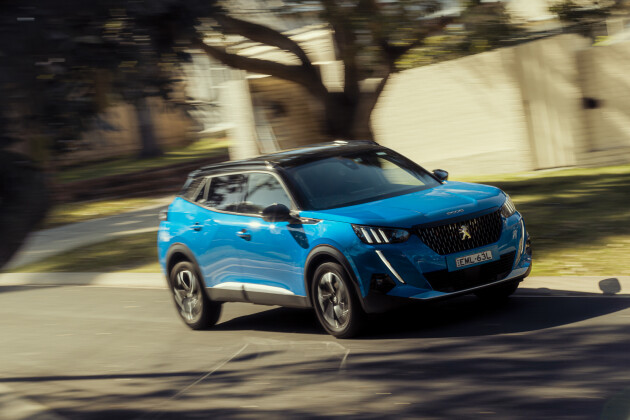 News
NewsPeugeot updates 2022 208 and 2008 range
Fully-electric variants score extended driving range
-
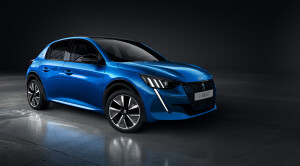 News
NewsPeugeot set to unveil first BEV in Australia in 2022
3008 Hybrid4 and 508 PHEV also confirmed for local release in 2021
-
.jpg) News
NewsCitroen and Peugeot models recalled after braking system fault detected
Five different models are affected by the issue
-
 Motorsport
Motorsport2020 Peugeot 208R2 revealed in testing
R2-spec 208 to utilise Peugeot’s 1.2-litre engine
-
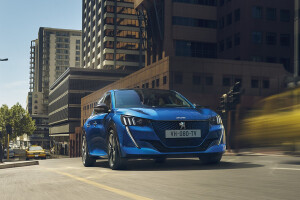
2020 Peugeot 208 revealed with all-electric version
-
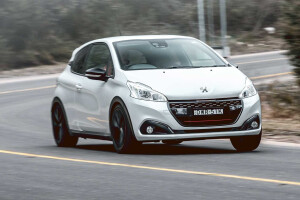
2018 Peugeot 208 GTi Edition Definitive: Celebrating driver's cars
-

Celebrating Driver's Cars: Introduction
-
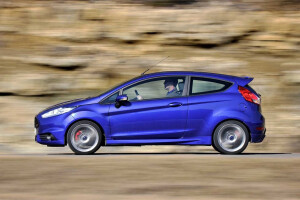
Hot hatch bargains at Yaris prices


.jpg)
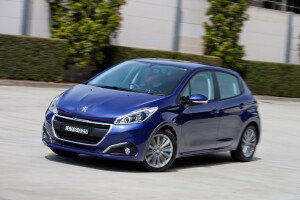
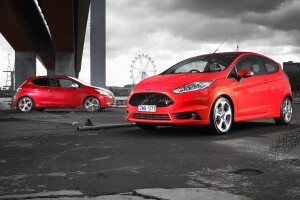
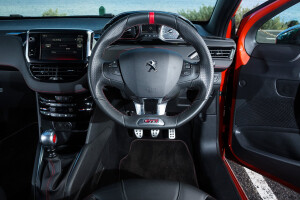
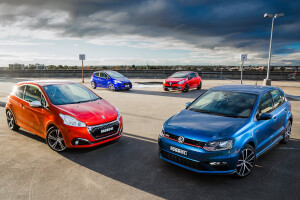

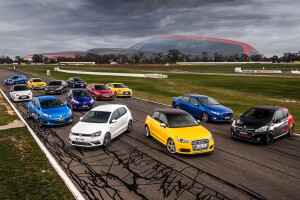

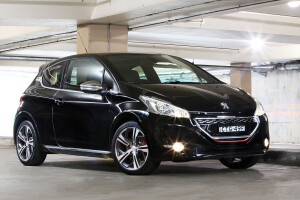
.jpg)